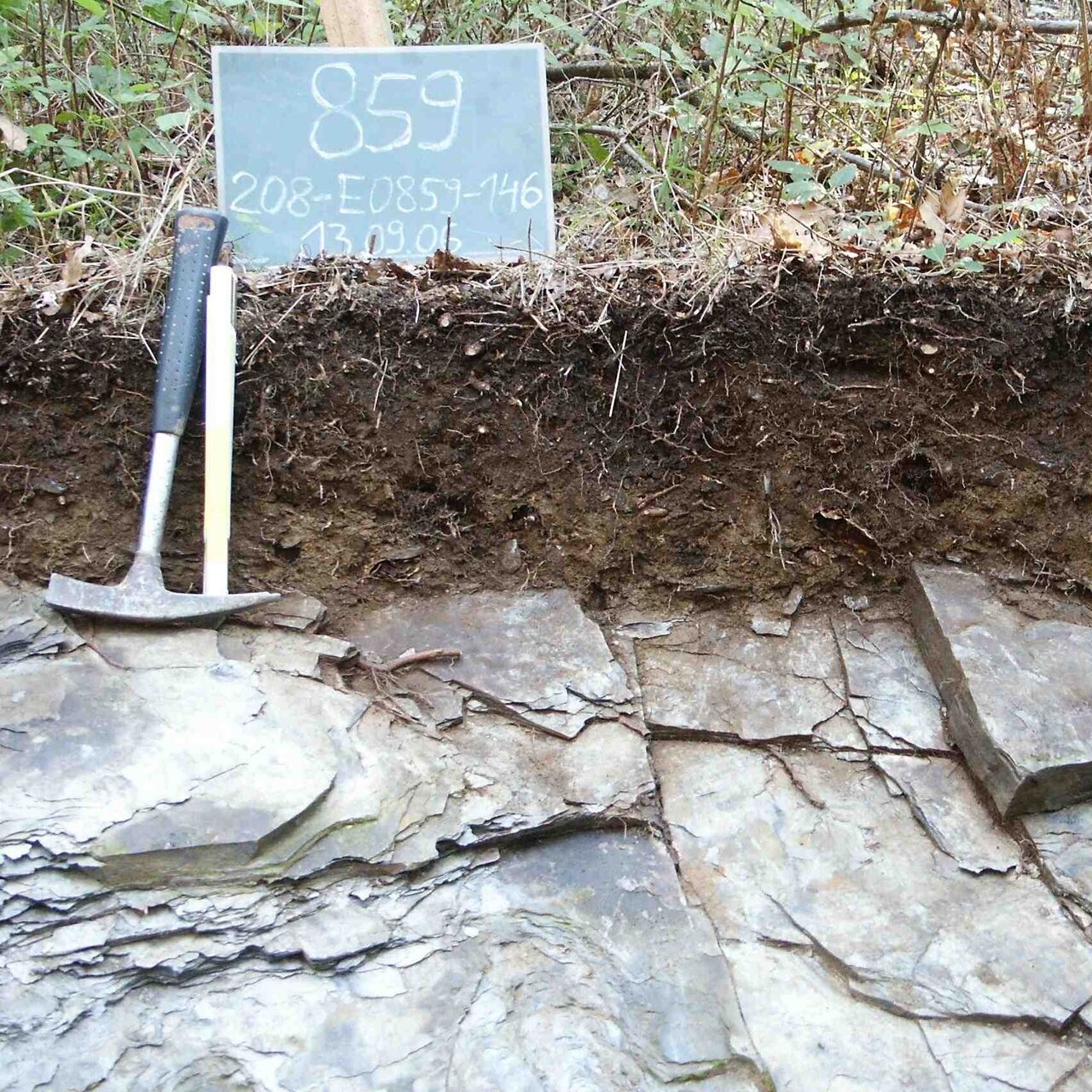Project
National Forest Soil Inventory

The BZE characterises the condition of forest soils, identifies changes in forest condition since the first inventory and answers any new research questions, e.g., about carbon inventory.
Background and Objective
The BZE represents a national, systematic sampling inventory of the condition of forest soils. The first BZE inventory (BZE I: 1987-1993) was carried out on a systematic 8 x 8 km grid on the same sampling plots adopted in the forest condition survey (WZE). In some areas the network of sampling plots involves 1900 grid points. The first BZE I field survey was repeated after 15 years, between 2006 and 2008, by the national and the state authorities in cooperation. Afterwards, extensive laboratory and statistical analyses were conducted.The Thünen -Institutes of forestecosystems coordinates the evaluation with 35 experts. The ferdal states are resonsible for the assessment, anaylsis and evaluation of their own data.
The national forest inventory focus on.
- Status and changes of soil and forests condition
- Impacts on envirnomental factors like atmospheric deposition or climate on soil and crown condition, growth, vegetation and tree nutrition as well as biodiversity.
Approach
A detailed description of the methodology can be found in the "Aufnahmeanleitung zur Bodenzustandserhebung im Wald" (Wellbrock et al. 2006, in German) and in "Handbuch der forstlichen Analytik" (Gutachterausschuß forstliche Analytik 2006, in German).
Wellbrock et al (2006): Aufnahmeanleitung zur Bodenzustandserhebung im Wald.
Gutachterausschuß forstliche Analytik (2006): Handbuch der forstlichen Analytik. BMELV.
Links and Downloads
Thünen-Contact

Involved Thünen-Partners
- Bielefeldt, JudithWO Institute of Forest Ecosystems
- Dühnelt, Petra-ElenaWO Institute of Forest Ecosystems
- Eickenscheidt, NadineWO Institute of Forest Ecosystems
- Grüneberg, ErikWO Institute of Forest Ecosystems
- Hilbrig, LutzWO Institute of Forest Ecosystems
- Höhle, JulianeWO Institute of Forest Ecosystems
- Ziche, DanielWO Institute of Forest Ecosystems
More Information
Project status:
finished
Publications
- 0
Wadoux AMJ-C, Courteille L, Arrouays D, Carvalho Gomes L De, Cortet J, Creamer RE, Eberhardt E, Grüneberg E, Harhoff R, Heuvelink GBM, Krahl I, Lagacherie P, Miko L, Mulder V, Pásztor L, Pieper S, Richer-de-Forges AC, Sánchez-Rodríguez AR, Steinhoff-Knopp B, Wellbrock N, et al (2024) On soil districts. Geoderma 452:117065, DOI:10.1016/j.geoderma.2024.117065
- 1
Fischer HS, Michler B, Ziche D, Fischer A (2019) Chapter 10: Plants as indicators of soil chemical properties. Ecol Stud 237:295-309, DOI:10.1007/978-3-030-15734-0_10
- 2
Eickenscheidt N, Puhlmann H, Riek W, Schmidt-Walter P, Augustin N, Wellbrock N (2019) Chapter 11: Spatial response patterns in biotic reactions of forest trees and their associations with environmental variables in Germany. Ecol Stud 237:311-354, DOI:10.1007/978-3-030-15734-0_11
- 3
Bolte A, Block J, Eichhorn J, Sanders TGM, Wellbrock N (2019) Chapter 12: Sustainable use and development of forests and forest soils: A resume. Ecol Stud 237:355-374, DOI:10.1007/978-3-030-15734-0_12
- 4
Wellbrock N, Ahrends B, Bögelein R, Bolte A, Eickenscheidt N, Grüneberg E, König N, Schmitz A, Fleck S, Ziche D (2019) Chapter 1: Concept and methodology of the national forest soil inventory. Ecol Stud 237:1-28, DOI:10.1007/978-3-030-15734-0_1

![[Translate to English:] [Translate to English:]](/media/_processed_/9/2/csm_Allgemein_Thueringen_Hainich_Mischwald_Bolte_2__19d9dab56a.jpg)
![[Translate to English:] [Translate to English:]](/media/_processed_/d/2/csm_100_0001_0013_c05c63e7db.jpg)




